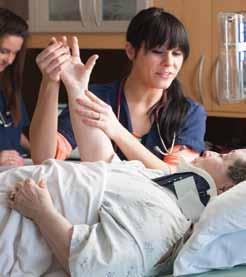Nursing Voice



Nurses from around the state gathered in Naperville, Illinois to be part of the 2nd Annual ANA-Illinois Membership Assembly. Members were joined by nursing students from around the region to hear the ANA president, Pamela F. Cipriano, PhD, RN, NEA-BC, FAAN, as she shared with the group how ANA guides the future of nursing. President Cipriano emphasized how the work of ANA blends well with ANA-Illinois through our joint advocacy efforts. From setting nursing care standards, developing expert panels, publishing key position papers, to ultimately increasing the safety and quality of patient care, ANA and ANA-Illinois complement each other’s efforts. Details around ANA’s 2014-2016 strategic pillars on Leadership, Cornerstone Documents, i.e. Code of Ethics for Nurses and Scope and Standards for Nursing, Quality, Work Environment, Healthy Nurse, Safe Staffing, Innovation & Transformation and Scope of Practice were shared and discussed at length.
ANA-Illinois president, Pam Brown shared with those present the association’s progress toward meeting the 2012-2015 strategic goals; 1) to be the voice of nursing for health policy and regulation in Illinois and 2) to increase the membership as we build a sustainable future for this association. President Brown reviewed updates about the association work being done at the national level, and work being spearheaded by ANA-Illinois as we continue to usher in the Affordable Care Act. She also addressed urgent health concerns facing the nation and ultimately citizens of Illinois related to the Ebola epidemic and the crucial role of nurses providing high quality care. She stressed how important it is to continue to engage in challenging conversations about the future of nursing practice. A special highlight was celebrating the 20% increase in membership, as well as our partnership with ANA as a control state in ANA’s Membership pilots. ANA-Illinois will enjoy increased levels of marketing, and a reduction in dues beginning November 1, 2014 (please read more specifics in another article addressing the dues). Of great importance, is our continual effort to be a unified voice for nursing, and we accomplish this by collaborating with other nursing organizations. ANAIllinois sees its role in the nursing community as one of “convener” of like-minded individuals and associations. To this end we continue to invite nursing associations to join ANA-Illinois as organizational affiliates and are proud to have forged solid relationships with the Illinois Hispanic Nurses Association, Philippine Nurses Association of Illinois, Illinois Association of School Nurses and the Illinois Society for Advanced Practice Nursing. ANA-Illinois also serves as the lead in the Illinois Coalition of Nursing Organizations (ICNO) which serves as a “think tank” for nursing issues. ICNO members include ANA-Illinois, Illinois Nurses


Foundation, Illinois Society for Advanced Practice Nursing, Illinois Association of Nurse Anesthetists, Illinois Association for Colleges of Nursing, Illinois Organization for Associate Degree Nursing, Illinois Organization of Nurse Leaders and the Illinois Community College Boards (ICCB) Deans and Directors.
In 2014, the ANA-Illinois Board of Directors developed an “Educational Partner” program with colleges/schools of nursing. The program is designed to offer tuition discounts for members of the association. The assembly warmly welcomed the announcement and celebrated those institutions that have become our first educational partners, Olivet Nazarene University, University of St. Francis and Blessing Rieman College of Nursing. Each of these partners offer a 20% tuition discount to members of ANA-Illinois.
During this next year, ANA-Illinois will continue our work with the Expert Panel on Scope of Practice for Registered Nurses and look forward to sharing our results as we begin our preparations for the Sunset of the Nursing


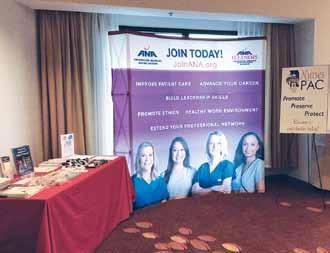

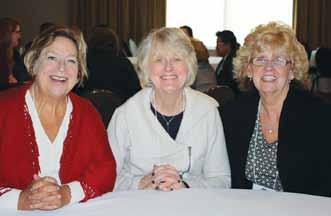
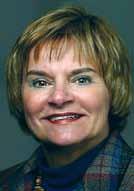
Dear Illinois Nursing Colleagues, Words that are usually used to describe nurses include caring and compassionate –others we don’t often hear are courageous and heroic. As I write this column the Ebola virus has entered the US and the first person to contract the disease in this country is a nurse. Many frontline caregivers, including nurses, have already been infected and died in the African countries where the disease and this outbreak began. By the time you read this column, the virus may have spread to Illinois. As the largest group of healthcare professionals providing direct care at the bedside 24/7, it is highly likely that many more nurses will be exposed to this deadly infection before the disease is completely contained.
On the morning I am writing this column, on the very popular TV show, The View, one of the hosts described nurses caring for Ebola patients as being heroes for doing what nurses do every day – being there to care for a patient who needs care despite personal risk. I believe that most nurses do not view what they do as heroic and yet, nurses are in harm’s way in many situations outside the public glare of the media. Exposure to infectious diseases is considered routine now – unpredictable, often violent behavior directed at healthcare providers is expected in some settings and can occur as a result of conditions like dementia, confusion, and psychosis. On a daily basis

James B. Goldberg & Associates
James B. Goldberg
Areas: Licensing, Disciplinary Proceedings, Hospital Termination, Nursing Home Proceedings and All Nursing Rights Issues. We care about nurses and travel throughout Illinois
• Free Consultation
• All Communications Privileged
• All Calls or Emails returned immediately
Contact James B. Goldberg, 312-735-1185 200 Wacker Drive, Suite 3100, Chicago, Illinois 60606 Email: jgoldberg@jbglaw.com Goldberglicensing.com

HEALTH FACILITIES SURVEILLANCE NURSES
Ignite your Nursing Career with the State of Illinois and work with a group of talented professionals who are passionate about protecting the health and improving the lives of all Illinoisians!
Excellent benefits with Positions open in the following regions
• Chicago • Bellwood • West Chicago • Rockford • Peoria
• Champaign • Springfield • Marion • Edwardsville FOR IMMEDIATE CONSIDERATION PLEASE MAIL A COMPLETED CMS-100 EMPLOYMENT APPLICATION DIRECTLY TO:
CENTRAL MANAGEMENT SERVICES
CMS – Stratton Building 401 S Spring Street, Rm 500 Springfield, IL 62706 (217) 557-6885 (217) 785-3979 TDD/TYY only
Include the Position Title Health Facilities Surveillance Nurse and indicate desired County Choice.
Illinois employment applications (Form CMS-100) are downloadable at: http://www work illinois gov/download htm
If you have any questions, please contact Robin Tucker-Smith, EEO/AA Officer @ IDPH (312) 814-1041 or dph.hrrecruiter@illinois.gov
nurses must weigh risk versus duty as we meet our moral obligation to provide care for all.
The Ebola outbreak is an extreme example of the risk nurses take for granted when providing care in a situation where disease can be transmitted through contact. This situation has shone the spotlight on the role of the nurse as a constant caregiver in the face of many unknowns. Nurses were asked to dive into uncharted territory and they did so willingly despite the uncertainty of clear, consistent safety protocols being in place.
Reminiscent of the early days of AIDS, caregivers can be expected to feel anxiety - even fear- when asked to care for a patient that has a disease where care is uncharted territory and carries a very high mortality rate. This is where courage comes into play - It takes courage to perform what others see as a heroic act. Courage is shown when one acts in the face of fear or as Dan Rather said, “Courage is being afraid but going on anyhow”. Mark Twain tells us “Courage is resistance to fear, mastery of fear - not absence of fear”. Nurses show courage in situations where providing the needed care supersedes the nurse’s fears about personal safety. The courage shown by nurses during the Ebola crisis, overcoming their fear to provide care, is best described by Andrew Redmoon, “Courage is not the absence of fear, but rather the judgment that something else is more important than fear.”
Walt Disney said that “Courage is the main quality of leadership, in my opinion, no matter where it is exercised. Usually it implies some risk – especially in new undertakings”. Nurses are stepping up to be leaders in this crisis – speaking out about the need for evidence based preparedness - serving as clinical experts on the CDC rapid response team and on the military response teamleading the training of personnel in the Chicago hospital being considered for receiving Ebola patients in Illinois and volunteering to be part of the dedicated staff to care for these patients.. As I hear, watch and read the news reports about this public health crisis I have never been prouder to be a NURSE!
Officers
EOE
Your moment is now. Offering RN-BSN and MSN degree programs as well as a RN-MSN Curriculum. Don’t waste another minute. Contact us today at www.brcn.edu 1-800-877-9140 Ext. 6964



The Southwest Region Indian Health Service is seeking Nurse Executives/Directors of Nursing talent that has an innovative spirit to lead, motivate and improve the health status of our Native American population. We support this effort by providing:
• Loan Repayment Program –Up to $20,000 annually
• Innovative and cutting edge practices
• A proven health care team
• Exceptional Federal Benefits, including Health and life insurance benefits
• Outstanding Federal Retirement Plan, and much more
Our nursing career opportunities are based on needs identified by our nursing executives and patient population located at various rural sites throughout the states of Arizona, Nevada and Utah. The Southwest Region also has the largest Medical Center in the Indian Health Service located in downtown Phoenix
INF Board of Directors
Maureen Shekleton, PhD, RN, FAAN President
Alma Labunski, PhD, MS, RN Vice President
Cathy Neuman, MSN, RN, CNAA Secretary/Treasurer
Directors
Cheryl Anema, PhD, RN
Maria Connolly, PhD, CNE, ANEF, FCCM
P. Joan Larsen, RN
Sarah Gabua, DNP(c), RN
Karen Egenes, EdD, MSN, MA, RN
Linda Olson, PhD, RN, NEA-BC
Lauren Mardirosian, BSN, RN
Diana Cafi, MSN, MHA, RN, CLNC
Officers
2013-2015 ANA-Illinois Board of Directors
Pamela Brown, PhD, RN President
Ann O’Sullivan, MSN, RN, CNE, NE-BC, ANEF Vice President
Dan Fraczkowski, MSN, RN Treasurer
Sarah Gabua, DNP(c), RN Secretary
Directors
Diana Cafi, MSN, MHA, RN, CLNC
Deb Eagan, BSN, RN
Karen Egenes, EdD, MSN, MA, RN
Alyssa Grzegorzewski, BSN, RN
Bonnie Salvetti, BSN, RN
Editorial Committee
Editor Emeritus
Alma Labunski, PhD, MS, RN
Chief Editors
Lisa Anderson-Shaw, DrPH, MA, MSN
Karen Mayville, MSN, PhD, RN
Members
Cheryl Anema, PhD, RN
Margaret Kraft, PhD, RN
Linda Olson, PhD, RN, NEA-BC
Executive Director
Susan Y. Swart, MS, RN, CAE
ANA-Illinois/Illinois Nurses Foundation
Article Submission
• Subject to editing by the INF Executive Director & Editorial Committee
• Electronic submissions ONLY as an attachment (word document preferred)
• Email: info@ana-illinois.org
• Subject Line: Nursing Voice Submission: Name of the article
• Must include the name of the author and a title.
• INF reserves the right to pull or edit any article / news submission for space and availability and/or deadlines
• If requested, notification will be given to authors once the final draft of the Nursing Voice has been submitted.
• INF does not accept monetary payment for articles.
Article submissions, deadline information and all other inquiries regarding the Nursing Voice please email: info@ana-illinois.org
Article Submission Dates
(submissions by end of the business day)
January 15th
April 15th
July 15th
October 15th


Advertising: for advertising rates and information please contact Arthur L. Davis Publishing Agency, Inc., 517 Washington Street, P.O. Box 216, Cedar Falls, Iowa 50613 (800-626-4081), sales@ aldpub.com. ANA-Illinois and the Arthur L. Davis Publishing Agency, Inc. reserve the right to reject any advertisement. Responsibility for errors in advertising is limited to corrections in the next issue or refund of price of advertisement.




Acceptance of advertising does not imply endorsement or approval by the ANA-Illinois and Illinois Nurses Foundation of products advertised, the advertisers, or the claims made. Rejection of an advertisement does not imply a product offered for advertising is without merit, or that the manufacturer lacks integrity, or that this association disapproves of the product or its use. ANA-Illinois and the Arthur L. Davis Publishing Agency, Inc. shall not be held liable for any consequences resulting from purchase or use of an advertiser’s product. Articles appearing in this publication express the opinions of the authors; they do not necessarily reflect views of the staff, board, or membership of ANA-Illinois or those of the national or local associations.

If you, or someone you know has an interest, please contact CDR Stephen Navarro at 602-364-5222, or email Stephen at Stephen.navarro@ihs.gov I hope we’ll talk soon.
P.S. Your Southwest adventure awaits you.


Holiday greetings to all readers and I wish you Blessed Holidays!!

I’m preparing this article as America is in the midst of Ebola reaching its shores. I am very proud of the American Nurses Association (ANA) and the Centers for Disease Control (CDC) leadership in disseminating new knowledge during this healthcare challenge. Many of you remember the HIV epidemic and how we practiced as we learned, recent events certainly took me back there. As I reflect on these events, two national nursing groups stood out to me, ANA and Sigma Theta Tau International (STTI) Honor Society of Nursing. Both have separate discrete missions, yet very compatible missions. ANA’s mission: “nurses advancing our profession to improve health for all,” and STTI’s mission: “advancing world health and celebrating nursing excellence in scholarship, leadership, and service.” I believe strongly in ANA’s Code of Ethics for Nurses and in STTI’s motto of love, courage and honor. I want to celebrate as well as remind all of us about the power of ONE professional nurse to make a difference, sending ripples throughout our patient lives, the workplace, and our profession.
Nurses who practice with ethical comportment and from a framework of love, courage and honor offer healing to others, and advance our profession. So, what is love as it relates to nursing practice or how do we recognize those nurses who practice with love? I believe those are the nurses who are passionate about patient-centered nursing care, and demonstrate their commitment to the public we serve. They practice with compassionate inclusiveness with respect for the inherent worth and dignity of each person, no matter the social or economic status, personal attributes, or nature of the health problem. They are able to care for the ones who cause harm as well as the ones who are harmed. They





provide care based on the uniqueness of each individual. They have a passion for the nursing profession; articulate the values of nursing, and the integrity of the profession and its practice. The power of ONE nurse embracing a practice based on love, effects all those around him or her and inspires others to practice from that same framework. Please recognize and celebrate a passionate nurse you work with.
Courageous nurses practice as advocates, advocates for the health, safety and rights of their patients. They take risks, caring for those patients others are afraid of, or coworkers and society judge as “unworthy.” These nurses step up and follow in the footsteps of past nurses who cared for the vulnerable, e.g. patients with typhoid fever, influenza, cholera, polio, meningitis, MRSA, and AIDS. Nurses with courage use their advanced knowledge about infectious disease processes and make a difference in infection rates as well as overall survival rates. Courageous nurses speak out and speak up about safe quality care, and bring solutions to the table, not problems. They are never victims nor do they blame others; they bring new ideas and innovations that improve care. The power of ONE courageous nurse changes the lives of others in positive ways. Please recognize and celebrate a courageous nurse you work with.
Honorable nurses are proud of their profession, and advance the profession by contributing to practice knowledge including continuing education, nursing research, and service to others. Honorable nurses are accountable for personal and professional development, provide up to date optimum care, and bring best practices to the workplace. They honor their team members, co-workers and leaders. They are both team leaders and team players. They show respect and appreciation for others contributions. These nurses contribute to a healthy work environment by creating a place where the patient wants to receive care and where others want to provide care. The power of ONE honorable nurse changes the work or practice environment and advances the profession on a daily basis. Please recognize and celebrate an honorable nurse you work with.
Each one of you who practice from a framework of love, courage and passion make a difference every single day. Bless you!



Your ANA-Illinois Board of Directors has been hard at work developing strategies to continue to grow the association and better serve our members. At the heart of this strategy is making the association more affordable and accessible to nurses across the state of Illinois. Through careful budgeting and fiscally responsible management of the association, we are proud to report that full state and ANA member dues have recently been lowered to $282.00 per year. This represents a nearly 30% decrease from our dues just a few years ago, when our legacy organization had dues as high as $399.00 per year.
We have more work to do to make the association a value proposition and more attractive to new members and help with retention of current members. However, with our more affordable membership rate, there’s no better time to join us as we work to protect and advance nursing practice across the state of Illinois.










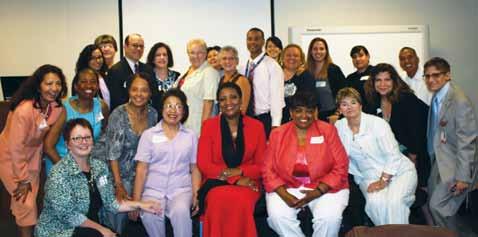
August 27, 2014 was a historic day in Illinois, as member leaders of Illinois minority nurses associations participated in open dialog about growing the diversity of the nursing workforce, strengthening our associations & opportunities for partnership (see picture above). A special thank you to Barbara Nichols, MS, RN, FAAN, Robert Wood Johnson Foundation (RWJF)/Center to Champion Nursing in America (CCNA) Diversity Consultant for energizing the meeting with her keynote presentation: Diversity and the Global Nursing Workforce.
The Illinois Center for Nursing (ICN), Co-chair of the Illinois Healthcare Action Coalition (IHAC), in partnership with the Illinois Hispanic Nurses Association (IHNA), convened a meeting with multiple purposes.
The afternoon began with a warm welcome from Jay Stewart, Director Illinois Department of Financial and Professional Regulation (IDFPR), followed by a welcome from Maureen Shekleton, PhD, RN, DPNAP, FAAN, ICN Vice Chairperson, Illinois Nurses Foundation (INF) President; INF is the fiscal agent for the IHAC RWJF SIP Grant. We began the meeting with Nurse Nichols’
presentation highlighting the Robert Wood Johnson Foundation (RWJF) National Diversity vision.
Susana Gonzalez, MHA, MSN, RN, CNML, IHNA President and Carmenza Millan, AARP-Illinois Associate State Director, Advocacy and Outreach, presented on their successful spring 2014 partnership which created an ACA education outreach program, successfully reaching approximately 300 community members in 2 months time.
The final presentation was Kathy Waligora, MSW, Manager Health Reform Initiatives, EverThrive Illinois – offering to present resource information about ACA enrollment – the signup sheet was filled with requests for participation before the end of the day. Pam Robbins, ANA-Illinois chaired the day’s activities. Kathy Benjamin, MSN, RN, NE-BC, MacNeal Hospital Chief Nursing Officer spent time with us at the beginning of the day.
The day wrapped up with a round-table discussion facilitated by Linda B. Roberts, MSN, RN, ICN Manager, about the uniqueness of each participating organization, options for information sharing, opportunities for partnership, collaboration, and leadership development, strengthening our associations and growing the diversity of nursing and health care workforce.
Member leaders present for all or part of the day were from the following Illinois minority nurses associations:
• Illinois Chapter of the National Association of Hispanic Nurses
• Chicago Chapter National Black Nurses Association
• Philippine Nurses Association of Illinois
• Illinois International Polish Nurses Association
• Chicago Bilingual Nurse Consortium
Additional organizations present: University of Illinois College of Nursing Alumni Association, Jonas Scholar Rush University College of Nursing, ANA-Illinois, Illinois Center for Nursing, Illinois Society of Advanced Practice Nurses, IDFPR Board of Nursing, City Colleges of Chicago, Instituto Del Progreso Latino, Chicago Area Health Education Center, Illinois Nurses Foundation.

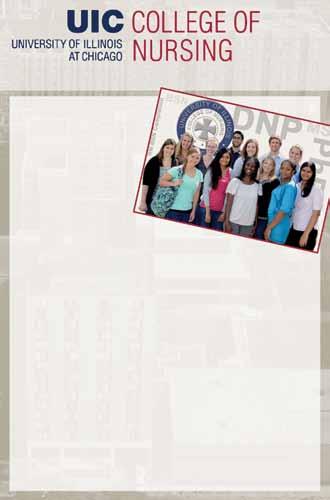
• You can earn a RN to BSN Completion, Advanced Generalist Master of Science or Doctorate of Nursing Practice (DNP) degree right here in Rockford!
• Receive personal mentoring from faculty recognized for their expertise in teaching, research and practice.
•
Membership Assembly continued from page 1
As CCNA Diversity Consultant Barbara Nichols encouraged at the end of the day to the collective group: we must continue our «relationship» – to build on the energy of the day - what sage advice.
Thank you to Kathy Benjamin, CNO MacNeal Hospital for providing such a welcoming place to meet; to Susana Gonzalez for hostessing and presenting; to panelists Carmenza Millan/AARP-Illinois, Kathy Waligora/ EverThrive Illinois; to Pam Robbins, ANA-IL for chairing the event and for taking pictures; to Linda B. Roberts for outreach and organizing, to Barbara Nichols for beginning the day with such a powerful presentation, and a special thank you to ICN and IHNA for coordinating this historic event.


Act in 2017. In the spring of 2015, ANA-Illinois will again host our very successful Student Nurse Political Action Day (SNPAD) which last year convened 29 schools of nursing and over 1200 students and RNs in Springfield. Also announced was the plan to launch the new ANAIllinois “Advocacy Portal” in November 2014. As we officially kick off the portal, the first order of business is engaging the newly formed Illinois Grassroots Nursing Coalition. The Coalition allows us to interact with nurses across the state of Illinois. The portal makes it easy for nurses to engage in health policy activities. The first priority of the Coalition is pursuing Full Practice Authority for APNs during the 2015 legislative session. Watch for important announcements via email on this and other topics related to legislation and the Advocacy Portal. Two issues forums were held during the Membership Assembly. Attendees were able to provide valuable feedback to the board on issues related to care coordination and advocacy efforts. The perfect ending to the day was the dessert reception, hosted by the Illinois Nurses Foundation (INF). Maureen Shekleton, President of INF, took time to thank everyone for supporting the valuable work the Foundation does throughout the year. A special thanks was shared with the Foundation members for INF being instrumental in Illinois receiving the State Implementation Program (SIP) Grant.

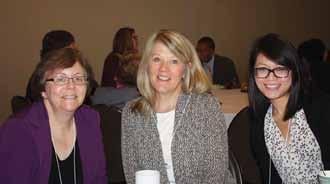
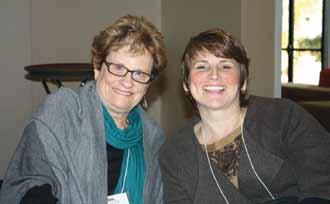
1.0 Contact Hours
This offering expires in 2 years: December 10, 2016
The purpose of this activity is to enable the learner to communicate in difficult situations and identify effective ways to respond to conflict.
Learning Objectives:
1. Identify the importance of effective communication in health care.
2. Describe differences among various communication styles.
3. Demonstrate effective assertive communication techniques.
4. Identify effective ways to respond to verbal attacks.
This course is 1.0 Contact Hours
1. Read the Continuing Education Article
2. Take the test on the next page
3. Complete the entire form
DEADLINE
Answer forms must be postmarked by December 1, 2016
Mail or fax the completed answer form. Include processing fee as follows:
ANA-Illinois members- $7.50 Non members- $15.00
Check or money order payable to Illinois Nurses Foundation (INF) or credit card information only
MAIL: Illinois Nurses Foundation
PO BOX 636, Manteno, Illinois 60950
FAX: Credit Card Payments Only 773-304-1419
ACHIEVEMENT
To earn 1.0 contact hours of continuing education, you must achieve a score of 80% If you do not pass the test, you may take it again at no additional charge Certificates indicating successful completion of this offering will be emailed to you.
The planners and faculty have declared no conflict of interest.
ACCREDITATION
This continuing nursing education activity was approved by the Ohio Nurses Association (OBN001-91), an accredited approver by the American Nurses Credentialing Center’s Commission on Accreditation.
Ann O’Sullivan, MS, RN, CNE, NE-BC Vice President, ANA-Illinois, Assistant Dean, Blessing-Rieman College of Nursing, Quincy, IL
Objectives
1. Identify the importance of effective communication in health care
2. Describe differences among various communication styles
3. Demonstrate effective assertive communication techniques.
4. Identify effective ways to respond to verbal attacks. Sound Familiar?
A group of nurses on a medical surgical unit describe a peer as careless and inattentive. Instead of confronting her, they double-check her work—sometimes re-checking a critical patient’s vital signs after she has done them. They’ve worked around this nurse’s weaknesses for over a year. They resent her, but never talk to her about their concerns.
Another nurse yells at you for not being here on time to help get a patient up.
Your supervisor says to you: Can you EVER get here on time? Don’t you care about your patients and the other nurses?
Dr. Smith says to a nurse: Why is there NEVER a nurse here who knows ANYTHING about my patients? Do you people even know how to take a temperature and put it on the right chart?
Is Communications an Issue in Health Care?
The Joint Commission on Accreditation of Healthcare Organizations suggests that communication is a top contributor to sentinel events. Intimidating and disruptive behaviors can foster medical errors, contribute to poor patient satisfaction and to preventable adverse outcomes, increase the cost of care, and cause qualified clinicians, administrators and managers to seek new positions in more professional environments. Safety and quality of patient care is dependent on teamwork, communication, and a collaborative work environment. (Joint Commission, 2008).
Past studies have indicated that more than 60% of medication errors are caused by mistakes in interpersonal communication (Silence Kills, 2005). Each year hundreds of thousands of patients are harmed during their treatments because of fundamental problems in the collective behavior of the caring professionals who care for them (Kohn, Corrigan, Donaldson, 2000).
In a Georgia Health Care Workforce Policy Committee report (2002) “Lack of communications was by far the number one concern…the most critical of all issues” in promoting health care workplace excellence. Eastaugh (2004) reports, “The most common cause of malpractice suits is failed communicating with patients and their families”. Engstrom and Madlon-Kay (1998) report that “84% of patients choose their clinician on the basis of how well he or she communicates”.
More recently, the American Association of Critical Care Nurses (AACN) and Vital Smarts conducted a nationwide study that suggests that there are crucial conversations that people in healthcare frequently fail to hold that likely add to unacceptable error rates. This study recommends that improvement in these crucial conversations will contribute to significant reductions in errors, improvement in quality of care, reduction in nursing turnover, and marked improvement in productivity. (Silence Kills, 2005)
Researchers conducted dozens of focus groups, interviews, and workplace observations from more than 1,700 respondents, including 1143 nurses. More than half of those surveyed had witnessed broken rules, mistakes, lack of support, incompetence, poor teamwork, disrespect, and micromanagement. Many reported observing co-workers cutting corners, making mistakes, and demonstrating serious incompetence. However, fewer than one in ten fully discussed their concerns with the other person. And most do not believe it is their responsibility to bring this to the attention of the other person. About half or the respondents say the concerns have lasted for more than a year. A significant number report that there have been serious injurious consequences of the concerning behavior. (Silence Kills, 2005)
Why and how could this be true? Is it true for you? Why don’t people speak up? It is difficult confronting people! People’s lack of ability, belief that it is “not their job”, and low confidence that it will do any good are the three primary obstacles to direct communication. Other obstacles include time and fear of retaliation. This research demonstrated that there are 5-15% of healthcare workers who do step up to these difficult conversations. These workers report observing better patient outcomes, are more satisfied with their workplace, have increased productivity, and intend to stay in their unit and hospital. (Silence Kills, 2005).
In this article we will address the main obstacles—a nurse’s lack of knowledge, confidence and ability to hold critical conversations with their co-workers. However, I must point out that legally, ethically, and morally it is the individual nurse’s responsibility and it is their job to report, deal with, and take action on the incompetent behavior of their peers and co-workers. In the ANA document Nursing: Scope and Standards of Practice (2010) it is clear in the Standard #7 Ethics competencies that: “The registered nurse takes appropriate action regarding instances of illegal, unethical, or inappropriate behavior that can endanger or jeopardize the best interests of the healthcare consumer of situation.” and that “The registered nurse speaks up when appropriate to question healthcare practice when necessary for safety and quality improvement.” Standard #14 Professional Practice Evaluation competencies state: “The registered nurse provides peers with formal and informal constructive feedback regarding their practice or role performance.”

The Illinois Nurse Practice Act (2007) includes in the RN Scope of Practice the following obligations for nurses: The provision for the maintenance of safe and effective nursing care rendered directly or through delegation; advocating for patients; evaluation of responses to interventions and the effectiveness of the plan of care; and communicating and collaborating with other health care professionals. In addition the section on disciplinary action includes the following as grounds for disciplinary action: knowingly aiding or assisting another person in violating any provision of this Act or rules; a pattern of practice or other behavior which demonstrates incapacity or incompetence to practice under this Act; and gross negligence in the practice of practical, professional, or advanced practice nursing.
What is your typical communication style? Are you passive? Aggressive? Assertive? Or some combination of each of these styles in different situations?
Basically, communication is a feedback loop. Verbal and nonverbal signals go out from one to another and a response of some kind is transmitted back. Most of us learn our communication style early in childhood as a way to get our needs met. Think of the crying infant…a toddler having a temper tantrum…a teenager ranting about how unfair life is…a co-worker yelling at another person...a spouse crying because her husband forgot her birthday…yourself when you are overworked, tired, frustrated, hungry. We continue to communicate in ways we learn early if they are successful in meeting our needs. In general, we will only change our communication style to a more assertive, adult manner when it becomes evident that the other styles are not working. Some of those people you work with or live with may not have learned yet that aggressive or passive communication does not work well as adults. A key principle here is that we each have a role in whether a communication is working well or not—even when it appears that only the other person is communicating poorly!
In general our communication feedback loop works well when there is no stress. How often is this the situation in the healthcare environment? Another key principle of effective communication is that the only true communication is what the other person perceives you to have said, written, or intended. When stress is added, perceptions get tangled. Once again it is up to each of us—the sender and the receiver to communicate in such a way as to minimize the stress and maximize the chance that the true intention is what is perceived and acted upon. This becomes especially challenging in our fast paced, e-mail, texting, and technology world today.
Passive communication is described as having the goal of avoiding conflict at all cost. The actual behavior is one of ignoring one’s own rights, being inhibited, not speaking up, avoiding eye contact, having a soft, weak, wavering voice, or being vague, rambling, apologetic. Sound familiar? This style is not effective because the passive communicator does not meet their own needs, the unit does not benefit from their wisdom and contributions, and often times they suffer from physical, mental, and emotional illnesses related to “keeping it all bottled up inside”. Passive communicators have also been known to become aggressive and lash out inappropriately at others when the frustration of keeping it bottled up becomes too great.
Aggressive communication is characterized as competitive, controlling, manipulative, dominating, bossy, loud, demanding, sarcastic, and blaming. The aggressive communicator’s goal is to win regardless of the cost to others. Ever experience this? Keep in mind that people who routinely communicate in this manner do so out of a position of low self-esteem. They have learned that as they put others down, they feel like they are building themselves up. This style is not effective because everyone looses in the long run. The sender may get what they want for a short time, but it generally doesn’t last. The rest of the people do not respect, follow, or comply with the sender’s wishes for very long, if at all.
Assertive communication is described as adult communication with the goal of win-win. It is open, honest communication that results in respect of self and others. Characteristics consist of expressing oneself without violating the rights of others, remaining calm, confident, relaxed, taking responsibility for their own behavior, seeing and making choices, and being open to negotiation. This communication style is hard and needs to be learned through continued study and practice. But the rewards are very well worth it! People who routinely communicate is an assertive manner generally experience successful relationships in marriage, workplace, and in their professional and personal relationships.
Here are some specific suggestions to becoming a more assertive communicator:
1. Use “I” messages to express your perspective, feelings, wants, and needs.
a. No whining, blaming, or attacking.
b. State objective facts. “I am not able to work tomorrow because I have a doctors appointment.”
2. Response to criticism
a. NOT aggressively by blowing up, attacking, sarcastic, getting even, brining up past history
b. NOT passively by crying, escaping, staying silent and taking it, getting even later
c. Do be ASSERTIVE: Assume you are the final judge of your own behavior and you are responsible for the consequences of this behavior
i. Acknowledgement—admit the mistake without excuses or blaming if you are wrong. Share your plan for correction and learning form the mistake
ii. Clouding/Fogging—Use if the criticism is manipulative or non-constructive. Find something in the criticism to agree with that is true. Agree in part, modify the “always”, “nevers” rephrase the criticism more accurately. For example: Your supervisor says to you: “Can’t you EVER get here on time. Don’t you care about your patients and the other nurses?
”. You respond, “You’re right, I was late today. I am sorry. Let me get right to my assignment”. Don’t start arguing about not always being late or whether you care about your patients or other nurses.
iii. Probing—Use if the criticism is unclear. This will help give you more information about what specific behavior of yours may need to be corrected. For example: Dr. Smith says to a nurse: “Why is there NEVER a nurse here who knows ANYTHING about my patients? Do you people even know how to take a temperature and put it on the right chart?” You reply: “Can you show me which patient you are talking about?” Don’t argue about what nurses know or don’t know!!
3. Use Broken Record technique: Calmly, succinctly repeat yourself until your message is heard. For example---in the above situation with Dr. Smith you may need to repeat the same thing a few times, calmly, not sarcastically, before he stops yelling.
4. Time out/delays—stop, take a breath, and respond assertively.
a. May need to delay the conversation to another time when you are under better control of your emotions and thoughts.
b. This is useful when you are tearful, frozen, or frightened and when someone is pressuring you, being hostile, angry or scary.
c. Do not put it off forever. Get back to the person and have the conversation that needs to be had when you are ready and prepared.
5. Three part sentences (my personal favorite) – helps you say things that need to be said in an objective, controlled manner. The three-part sentence goes like this: When you (state the observable facts of what they did or did not do), I feel (state what your emotion is about this event), because (state the reason for your concern).
a. For example: A nurse you work with is careless, inattentive, and incompetent. You say: “When you do not wash your hands before and after changing this patient’s soiled linens as required by policy, I feel scared for the safety of our patient, because quality patient care requires following this evidence-based policy to prevent infections.” You say this instead of ignoring the behavior and allowing incompetence to occur and persist.
b. For example: A nurse yells at you for not being here to help get a patient up. You respond “When you yell at me, I feel belittled and scared and anxious, because I am trying to do my best and be where I need to be to help you.” You say this instead of blowing up, or crying, or ignoring this verbal attack.
Suzette Haden Elgin introduced the concept of verbal self-defense in her first book The Gentle Art of Verbal SelfDefense in 1984. The basic tenant of this approach is that hostile language and hostile environments are prevalent in our workplaces today and that this is very unhealthy for people. Our normal response in these hostile environments is to attack back. In order to respond effectively we must retrain our brain to respond to attacks rationally.
1. Step One—Understand what’s really going on. Many times we think the person is attacking us to hurt, do harm or cause pain. Sometimes that’s true. But most of the time they are desperate for attention and know by attacking you they’ll get your attention. Remember the toddler, the teenager, etc. from our earlier discussion. Your new reaction is (internally)...poor thing, and you move on and ignore!
2. Step Two—Listen instead of leaping to conclusions. We hear someone say something that we react to negatively; we assume it’s false; we stop listening. Your new action: listen, find something that is true to agree with.
3. Step Three—Know how to respond. Our usual response is to attack back, plead or debate. Elgin says: What you feed will grow, what you starve will die. So try a new assertive way to respond—use the computer mode or assertive techniques. Computer mode is calm, no emotion, and may need to be repeated like the broken record technique.
The basic self-defense strategies to use as we re-train our brains are:
1. Recognize when you are under attack.
2. Match the sensory mode coming at you—sight, hearing, touch
3. Ignore the bait
4. Believe the body language
5. Find points of agreement
6. If unsure how to respond—go to computer mode
For example: (Back to an earlier case) Dr. Smith says to a nurse: Why is there NEVER a nurse here who knows ANYTHING about my patients? Do you people even know how to take a temperature and put it on the right chart?
1. This IS an attack!
2. No specific sensory language is evident, ie see, hear, seems like, etc
3. Ignore the bait—the negative statements about nurses. Don’t argue about this.
4. Even if this is said nicely, the body language is probably aggressive
5. LISTEN—what does he really want—to find a nurse who knows about his patient’s condition and to know his patient’s temperature. Both are realistic expectations for him to have.
6. So reply with an answer to what he really wants. Answer: What patient are you talking about? Let me find his nurse and get the temperature. Ignore the attack for now. Future conversations need to be held in a private location about the attack using a 3-part sentence: When you yell at me like that, I feel belittled and angry and scared, because we do try to meet your needs and document patient information accurately on the chart. I’d like us to talk further about how we can do better. Additional follow-up may need to be held with the nursing staff if the physician has legitimate concerns.
Dialogue Heals (Maxfield, Grenney, Patterson, McMillan, & Switzler, 2005), based on the Silence Kills (2005) study, introduces skills that can improve communication for individuals, teams, and organizations. This study finds that seven categories of conversations are especially difficult and are essential for people in healthcare to master. These include: broken rules, lack of support, mistakes, incompetence, poor teamwork, disrespect, and micromanagement.
Specific Crucial Conversation (Maxfield, Grenney, Patterson, McMillan, & Switzler, 2002) and Crucial Confrontation (Maxfield, Grenney, Patterson, McMillan, & Switzler, 2004) tools can be used to deal with these issues. Use of the assertive techniques can also assist the nurse to communicate effectively in order to improve quality patient care, avoid errors, and improve job satisfaction and retention.
References available by request – send request to syswart@ana-illinois.org
1. True or False More than half the nurses in the Silence Kills study reported that they had discussed concerns they had with mistakes and incompetence with the person involved.
2. Passive behavior is characterized by all of the following except:
A. inhibited
B. poor eye contact
C. blaming
D. apologetic
3. All of the following are assertive techniques except:
A. Yelling
B. I messages
C. Probing
D. Broken record
4. Which of the following is an appropriate response to a legitimate criticism?
A. Time out
B. Momentary delay
C. Clouding
D. Acknowledgement
5. Write a 3 part sentence as a response to the following situation: You just observed a nurse tear the tip of the index finger off the glove before she tries to start an IV on an elderly patient.






Become a leader in the industry with an MBA in Health Care Management from Quinlan—home to several nationally ranked graduate degree programs.
ATTEND AN UPCOMING INFO SESSION
Wednesday, Dec. 3 • 5:30 p.m. Wednesday, Jan. 14 • 5:30 p.m.
Wednesday, Jan. 28 • 5:30 p.m. Maguire Hall • 1 E. Pearson St. Water Tower Campus IN PERSON ONLINE
To register or request information, visit LUC.edu/NursingVoice
EMAIL ADDRESS (required to receive CE certificate)
How many minutes did it take you to read and complete this program? Suggestions for improvement? Future topics?

If you were inspired by a nursing instructor who instilled in you a passion for teaching, or perhaps you desire to invest in teaching a future generation of nurses for the good of your profession, Olivet has online or on-ground opportunities for you:
• Bachelor of Science in Nursing (RN to BSN)
• Accelerated Bachelor of Science in Nursing • Master of Science in Nursing (MSN): – Leadership/Management
Education
Family Nurse Practitioner (FNP)
Barton
The ISAPN Midwest Conference started on a crisp fall day in Naperville this year. Our opening session – a Medicaid update, was presented by Julie Hamos, Director of the Illinois Department of Health and Human Services. Ms. Hamos has been successful in launching a major redesign of Medicaid with care coordination for Medicaid clients, implementing Medicaid expansion under national healthcare reform, and crafting a plan, in a bipartisan legislative collaboration, to rescue Medicaid by closing a $2.7 billion budget gap. She shared how Medicaid is being restructured and emphasized the importance of APN involvement in meeting the needs of our Medicaid clients.

This was followed by a question and answer session wherein members voiced praise for HHS efforts, as well as frustrations and concerns.
“I am impressed once again by the passion demonstrated by APNs that I met at the Midwest Conference. We all care so much for our patients and everyone is committed to delivering the best care possible.”
Mary Ware Region 7
Catherine Schilling from Molina Healthcare gave us an overview of how APNs are essential in the care coordination and utilization management of clients. Molina Healthcare, multi-state health care organization, arranges for the delivery of health care services and offers health information management solutions to nearly five million individuals and families who receive their care through Medicaid, Medicare and other government-funded programs in fifteen states.

There were workshops that offered opportunity for acquiring or sharpening skills. As we embrace the challenges in our delivery of health care, these workshops help to prepare us for those opportunities.


Margaret Fitzgerald, well known to many APNs from certification preparation classes, presented several outstanding pharmacology programs providing us with the most up to date information.
Through the generosity of our exhibitors, we were afforded further opportunities for learning and networking.



We hosted our first POSTER SESSION. Seven outstanding posters were an opportunity for APNs to share their research or projects and engage in lively discussions about their work.
“The ISAPN MWC was a very full 3 days-worth of educational materials. All the sessions offered were very applicable to almost any APN practice/ setting.”
Diane Ryzner, Marketing Chairperson

The PAC (Political Action Committee) event this year was full of laughter and enthusiasm. Ed Sullivan, Illinois State Representative 51st district was present with our member Trish Sullivan FNP. Ed encouraged us to stay strong and move forward with our efforts for full practice authority.
Martha Shugart RN, candidate for representative in the 75th district, joined us in our festivities. Should Martha win the election she will be the first RN in the Illinois General Assembly. Martha will be an outstanding advocate for nursing in Illinois on THE GENERAL ASSEMBLY FLOOR!


There were also opportunities to learn about how to engage our colleagues in precepting, teaching healthcare advocacy and policy, empowering ourselves in the workplace, and becoming politically active.


Maureen Cahill, MSN RN APNC-CNS, from the Campaign for Consensus presented a program on” The National Landscape for APN practice,” specifically the status of the APRN title.
The conference cumulated by a presentation by our lobbyists, Sue Clark and Debbie Broadfield, Susan Swart, our executive director, and Michele Knappe, our government relations chair. This was a lively discussion of plans for 2015 to GO GREEN! Going Green is a national initiative by the AANP for all states to achieve full practice authority.


Our annual MWC is an outstanding educational opportunity! Even more than that it is an opportunity for us to reconnect, support each other and refuel!
Thank you to our Executive Team for all they do to make our conferences such awesome events! Much thanks to Joan Bundley, our Parliamentarian who is our everguiding bylaws and procedural expert!
Thank you to Sam Logan our photographer who captures the true essence of our conference! Sam is currently a FNP student at the University of Illinois in Champaign/Urbana.
“I have been to many conferences since obtaining my APN license and can honestly say, this year was among if not the best I have had the privilege to attend.”
Katherine Welch, ND, APN, FNP-BC


High quality, effective, and voluntary contraceptive education and services help women control the number, timing, and spacing of birth. Planned pregnancies allow women to optimize their own health before pregnancy and childbirth; consequently, decreasing health complications and lowering newborn risks such as low birth weight and preterm birth. This in turn improves the health for the family, expands opportunities, and has far reaching economic and social benefits.
Almost half of all pregnancies in the United States continue to be unplanned or mistimed.1 Multiple recent large studies from St.Louis2 to Colorado3 have demonstrated the efficacy of long acting reversible contraceptives (LARCs) to reduce unplanned pregnancies, reduce abortions, and improve pregnancy spacing. Long acting reversible contraceptives, specifically intrauterine devices (IUD) and the contraceptive implant require very little on- going maintenance/adherence by the user, are appropriate for most women of childbearing years, and fertility rapidly returns upon removal. Additionally, there are many fallacies associated with the intrauterine devices. With rapidly evolving research, the IUDs today have very few contraindications.4 According to the American College of Obstetricians and Gynecologists, IUDs are perfectly appropriate for adolescents; safe for women who have never had a baby; fine for women who have a history of sexually transmitted infections or ectopic pregnancies; and can be inserted anytime after a miscarriage/abortion or immediately postpartum.5,6
Under the Affordable Care Act, contraception is a preventive benefit without cost sharing. The time is ripe to insure all women of childbearing years have access to the whole range of FDA approved contraceptives. Long acting reversible contraception should be offered as the first line of contraception, though all other methods should be discussed focusing on the efficacy and side effects of each method. After education, counseling and informed consent, there should be no coercion, financial or otherwise for clients to use a certain method.
HFS is committed to aligning our policies and implementing payment reform to support the efforts of nurses and providers to offer comprehensive, evidence based family planning.7 For more information about the Illinois Family Planning Action plan and to link to provider and client resources, please see HFS’ birth control/family planning website at http://www2.illinois.gov/hfs/FamilyPlanning/Pages/default.aspx
References
1 Finer LB, Zolna MR. Unintended pregnancy in the United States: incidence and disparities, 2006. Contraception 2011; 84:478–85.
2 Secura GM, Allsworth JE, Madden T, Mullersman JL, Peipert JF. The Contraceptive CHOICE Project: reducing barriers to long-acting reversible contraception. Am J Obstet Gynecol 2010; 203(2):115.e1-115.e7.
3 Ricketts S, Klingler G, Schwalberg R. Game Change in Colorado: Wide spread use of long acting reversible contraceptives and rapid decline in births among young, low-income women. Perspectives on Sexual and Reproductive Health, 2014, 46(3):XX–XX, doi: 10.1363/46e1714.
4 Centers for Disease Control and Prevention. U.S. medical eligibility criteria for contraceptive use, 2010: adapted from the World Health Organization. Medical Eligibility Criteria for Contraceptive Use, 4th ed. Morb Mortal Wkly Rep 2010; 59: 1–88.
5 American College of Obstetricians and Gynecologists. ACOG Practice Bulletin No. 121: Long-acting reversible contraception: implants and intrauterine devices. Obstet Gynecol. 2011; 118: 184–196.
6 Committee on Adolescent Health Care Long-Acting Reversible Contraception Working Group, The American College of Obstetricians and Gynecologists. Committee opinion no. 539: Adolescents and long-acting reversible contraception: implants and intrauterine devices. Obstet Gynecol. 2012; 120: 983–988.
7 Gavin L et al., Providing quality family planning services:recommendations of CDC and the U.S. Office of Population Affairs, MMWR, 2014, 63(RR- 4):1–54.
Supporting our colleagues in their efforts for our organization and for APN practice is always a highlight of our conference.

year Carol Warfield received the Marie Lindsey Spirit Award for her long term commitment to the profession.

Melissa Ilg received the ISAPN member of the year award for her outstanding efforts for the
this year.

Pictured left to right TOP ROW: Melissa Theodore (REG 2 REP), Cassie Marie Ischmael (CRNA REP), Shannon Holthaus (SECRETARY), Mary Barton (PRESIDENT), Diane Ryzner (MARKETING CHAIR), Michele Knappe (GR/PAC CHAIR), Ricki Loar (TREASURER), GInger Behrhorst (REG 5 REP), Stephanie Crawford (REG 1 REP); left to right BOTTOM ROW Susan Swart (Executive Director) Michelle DiGiovanni (MEMBERSHIP CHAIR), Lisa Ilg (VICE PRESIDENT), Mary Ware (REG 7 REP), Erin Benanzer (PROGRAM CHAIR). Not pictured - Denise Orrill (REG 6 REP), Phillis Dewitt (REG 3 REP), Beth Mathews (REG 4 REP), Juli Aistars (CNS REP), Amy Willen (CNM REP), Bridget Cahill (CNP REP)










Prepared by: Alma J. Labunski, PhD., MS, RN, Editorial Emeritus, IL Nurses Foundation Board
The North Shore University Health System comprising four hospitals in northern Illinois, has embarked on a major new initiative. It is a comprehensive research study which investigates how an individual’s genetic makeup can impact health, wellness and the effectiveness of therapeutic intervention. It is designed to individualize health care based on an individual’s comprehensive genetic profile. It is known that an individual’s DNA transmits hereditary makeup and impacts health, risk for illnesses, and a response to many medicine. However, the study will investigate the relationships and in turn, hopefully, will potentially lead to improvements in health care through the genomic research results.
All adult North Shore patients have been invited to participate in the project. If interested, participants are asked to donate a blood sample to allow the researchers to process the DNA samples, all of which will be de-identified and kept confidential. Participants will be assigned a number; no name and identifying information will be used at that time and/or when findings are published.
Participants may have a blood drawn at a convenient time for the individual. Each sample will be stored in highly secured facilities within North Shore. Although participation is voluntary, the researchers’ goal is to enroll more than 100,000 individuals in this ongoing study. Participants may be contacted regarding the results pending their choice and agreement to learn of the outcome. Since participation is purely voluntary, participants may opt out of the study and/or be re-contacted individually as requested.
Further information/questions may be directed to the staff at 224-364-7470. For more information, pending participants may contact northshore.org/ghi or send requests to Genomic Health Initiative, North Shore University Health System, 1001 University Place, Evanston, IL 60201; Attn: Pablo V. Gejman, MD, Director.
Adapted from: Genomic Health Initiative. (2014). North Shore University Health System. Evanston, IL
Start your future here! Find





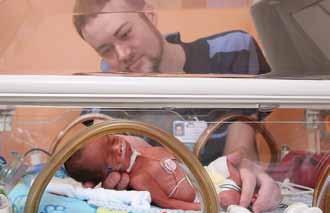
When will I receive my new license plate?
The Foundation must obtain 1,500 reservations before the Secretary of State’s office will begin production. We are estimating 12-15 months before the plates are distributed.
Why am I paying $20?
The fee is a deposit to reserve a nurses’ license plate. Once the State begins producing the plates, you will be charged a ONE-TIME charge of $29 to switch from a standard to specialty plate.
What happens if I have recently renewed my license plates and paid for a current sticker?
You will not be charged for a new sticker. When you receive your new plate, you will also receive a replacement sticker with the same expiration month.
Is there an additional charge if I want to personalize my plates?
Yes, there are many options in Illinois. Here is the current details, subject to increase per the Secretary of State’s office.
Random-Number Nurses License Plates
• Newly acquired vehicle/first-time issuance - $216 ($95 title fee + $101 registration fee + $20 Nurses license plates fee)
• Currently titled vehicle/first-time issuance - $121 ($101 registration fee + $20 Nurses license plates fee)
• Current plates expire within 90 days - $150 ($101 registration fee + $20 Nurses license plates fee + $29 replacement fee)
This is an incredible opportunity to raise funds as well as profile the critical work done by nurses.
Funds generated by orders of the license plates will go to the Illinois Nurses Foundation for nursing scholarships and grants. $20 of every order and renewal goes directly to the Illinois Nurses Foundation.
Download the form at http://www.cyberdriveillinois. com/publications/pdf_publications/vsd702.pdf
What will the license plate look like?
The design of the plate will not be determined until all of the reservations are acquired. At that time, the one of the three examples below will be chosen by the Secretary of State. We will share the final design once it has been approved and is ready for production.

We are the community’s choice for an exceptional healthcare experience.
Exciting Nursing Employment Opportunities
Graham Health System currently has numerous nursing positions available. Whether you are looking for hospital experience, clinic nursing or a home health setting, we have opportunities for you. All applicants must have a current Illinois RN License.

Attention NP/PA’s
Our Emergency Department has great fulltime opportunities available for you.
• Current plates do not expire within 90 days - $49 ($20 Nurses license plates fee + $29 replacement fee)
• Annual renewal - $121 ($101 registration fee + $20 Nurses license plates fee)
Vanity Nurse License Plates
• Newly acquired vehicle/first-time issuance - $310 ($95 title fee + $101 registration fee + $20 Nurses license plates fee + $94 vanity fee)
• Currently titled vehicle/first-time issuance - $215 ($101 registration fee + $20 Nurses license plates fee + $94 vanity fee)
• Current plates expire within 90 days - $244 ($101 registration fee + $20 Nurses license plates fee + 94 vanity Fee + $29 replacement fee)
• Current plates do not expire within 90 days - $143 ($20 Nurses license plates fee + $94 vanity Fee + $29 replacement fee)
• Annual renewal - $134 ($101 registration fee + $20 Nurses license plates fee + $13 vanity fee)
Plates
• Newly acquired vehicle/first-time issuance - $263 ($95 title fee + $101 registration fee + $20 Nurses license plates fee + $47 personalized fee)
• Currently titled vehicle/first-time issuance - $168 ($101 registration fee + $20 Nurses license plates fee + $47 personalized fee)
• Current plates expire within 90 days - $197 ($101 registration fee + $20 Nurses license plates fee + $47 personalized fee + $29 replacement fee)
• Current plates do not expire within 90 days - $96 ($20 Nurses license plates fee + $47 personalized fee + $29 replacement fee)
• Annual renewal - $128 ($101 registration fee + $20 Nurses license plates fee + $7 personalized fee)
When will I be able to personalize my plates and/or can I keep my current plate number?
Questions or to apply:
Graham Hospital 210 West Walnut Canton IL, 61520 Email questions to: jobs@grahamhospital.org Apply online at: www.grahamhealthsystem.org

Yes, after the 1,500 reservations have been obtained, the Secretary of State will send you a letter, at which time you will choose the kind of plate you want. You can also elect to keep your current license plate number.

The Illinois Center for Nursing (ICN), which is the state nursing workforce center, hosted a one day invitational meeting for healthcare workforce stakeholders. The registration for this invitational conference was closed at capacity. The event was held on Monday, September 29, 2014 at the State of Illinois Bilandic Center, Chicago, IL.
Participants represented a wide array of diverse stakeholder groups including education, hospital based care, community based care, public health, consumers, policy groups, health professional organizations, insurance, business and unions representing healthcare workers.

IDFPR Secretary Manuel Flores (center) greeting attendees of the ICN Sept 29, 2014 event
Illinois Department of Financial and Professional Regulation (IDFPR) Secretary Manny Flores began the day with a warm welcome and challenged attendees to share opportunities to coordinate development of the healthcare workforce in Illinois. CAPT Norma J. Hatot, Senior Nurse Consultant and Senior Advisor, Division of Nursing, Bureau of Health Workforce, HRSA, presented: A Vision for the Healthcare Workforce for the Future, HRSA. This keynote presentation was followed by Michael Gelder, Senior Health Policy Advisor to Governor Quinn and ICN Chair Dr. Donna Hartweg facilitating discussion from the reactor panel members. Panel member: Jani Gawrys, ACCESS Community Health Network; LaMar Hasbrouck, Director Illinois Department of Public Health; Lavon Nelson, Sr. Director, Illinois Community College Board; Pat Schou, Executive Director, Illinois Critical Access Hospital Network and Joan Sheforgen, Interim ED, Campaign for Better Health Care.

Morning session: P. Schou, J. Sheforgen, L. Nelson, D. Hartweg, LBRoberts at podium.
The afternoon session began with IDFPR Director Jay Stewart greeting the participants and welcoming the discussion focusing on promoting diversity and interprofessional collaboration. The afternoon agenda was amended slightly due to the keynote speaker’s airline travel disruption due to FAA issues. Two ICN Board members, Maureen Shekleton and Donna Meyer, adapted and delivered the Robert Wood Johnson Foundation (RWJF) presentation: Fostering Interprofessional Collaboration and Diversity: the Institute of Medicine (IOM) Vision. Diversity issues were addressed by the RWJF Consultant Barbara Nichols.
The reactor panel was co-chaired by Dr. Melinda Noonan, Associate VP Hospital Affairs and Assistant Professor Rush University and Dr. Maureen Shekleton, ICN ViceChairperson. Reactor panel members: J. Applegate, Executive Director, Illinois Board of Higher Education; Carmenza Millan, Associate State Director, AARP-Illinois; Elliot Richardson, CEO, Small Business Advisory Council; Julio Rodriguez, Illinois Department of Commerce and Economic Opportunity; Dominica Tallarico, President, Advocate Condell Medical Center.
Participants networking at ICN Event: Building the Healthcare Workforce for the Future

This event was an opportunity for stakeholders to come together to discuss and share ideas for shaping the Illinois healthcare workforce of the future and to identify potential opportunities for collaboration. Participants at the meeting were being asked to consider what such a workforce will look like in Illinois and what resources are needed to make that happen. Though the time for discussion was limited, discussion included incorporating all aspects of workforce development beyond nursing - what is needed for interprofessional teams to create practice efficiencies that expand the capacity to care for more patients.
Jennifer Pope RN MSN CHPN Instructor Chamberlain College of Nursing
Injury by falls in the older adult population continues to be a growing issue in healthcare today. In 2012 the direct medical cost of injury due to falls cost 30 billion dollars with an estimate of indirect and direct cost of injury falls in 2020 reaching 67.7 billion (“Cost of falls,” 2014). In 2011, 22,900 older adults died from unintentional falls and men were 41% more likely to die in a fall injury (“Web based Injury statics query and reporting system,” 2015). Women however were more likely to suffer from a fall related fracture (Stevens et al., 2006). Additionally, Centers for Medicare and Medicaid Services are no longer paying facilities for treatment of in-facility falls (Jorgensen, 2012).
Most falls are caused by multiple factors, both intrinsic (patient related) and extrinsic (environmentally related) in nature. Modifiable risk factors can include home hazards, poor vision, problems with shoes, and difficulties with balance or gait (Anderson, 2011). Additionally, as a standard of practice, a fall risk assessment should be administered to all older adult patients regardless of the health care setting. The assessment should include fall history, medical conditions, medications, gait (strength and balance), vision, postural hypotension inquiry and a home safety assessment (if applicable). Finally, nurses need to provide education to their patients about fall prevention.
When providing education to patients about fall prevention the goal is to change behavior. Often a nurse does not change a patient’s behavior through traditional advice and patient education. Effective education requires an understanding of what influences a patient’s decision making process. Examples of those influences include, values, beliefs, life stress, and culture. A useful model used to determine a patient’s readiness to make a behavior change can be found in the Transtheoretical Model or the Stages of Change Model. Behavior change is proposed to progress through five different stages (Edelman, et al, 2014). When a nurse knows what stage a patient is in they can be trained in responses to help move the patient from one stage to another.
Research continues to come out with new ways to help our patient’s decrease their fall risk. Researchers conducted a five month study looking at Tai Chi (a martial art that combines gentle movements, breathing techniques, and stretching) and seated exercise classes and found that these exercise based interventions even with low level intensity can be beneficial in reducing the risk for falls (Taylor et al., 2012). Additionally, scientists at the University of Western Ontario analyzed 13 studies over a 30 year period and determined that older adults taking daily doses of at least 800 to 1000 IU of vitamin D showed improvement in muscle strength and balance (Muir & Montero-Odasso, 2011).
Although there is heightened national attention on fall prevention, patient fall rates continue to escalate in the United States, putting patients and caregivers at risk. Considering the intrinsic, extrinsic and modifiable risk factors our patients face with a respectable fall risk assessment will assist nurses in reducing facility-based falls in practice. Assisting patients in behavior change, implementing evidence-based practice, and analyzing the research will benefit our pursuit in keeping our patients safe.
References
Anderson, M. (2011). Caring for older adults holistically (5th ed.). Philadelphia, PA: F.A. Davis Company.
Cost of falls. (2014). Center for Disease Control and Prevention. www.cdc.gov
Edelman, C.; Kudzma, E.; & Mandle, C.; (2014). Health promotion throughout the life span (8th ed.). St. Louis, MO: Elsevier-Mosby.
Jorgensen, J. (2012). Reducing patient falls: a call to action. American Nurse Today, 7, 10-20. Muir, S.; & Montero-Odasso, M.; (2011). Vitamin D is shown to improve muscle strength and balance in older adults. Journal of the American Geriatrics Society, 12, 2291-300. Stevens, J.A.; Finkelstein, E.A.; Miller, T. R.; (2006). The cost of non-fatal falls among older adults. Injury Prevention, 12, 290-295.
Taylor, D.; Walters, L.; Binns, E.; McCracken,H.; McPherson, K. (2012). Effectiveness of Tai Chi as a community based falls prevention intervention. Journal of American Geriatrics Society, 60 (5), 841-848.

Teresa Mahn, Sr Policy Governor’s Office with members of the Philippine Nurses Association of Illinois (PNAI) Board of Directors. PNAI is a professional, voluntary, non-sectarian and non-profit organization established 57 years ago. PNAI’s mission is to uphold the positive image and foster the welfare of the Filipino-American nurses as a professional group. This picture was taken at the annual scholarship fundraiser celebration which included the investiture of new officers. The PNAI is the leading voice and advocate for the Filipino-American nurses in Illinois; benefits include networking, professional support and mentoring, community services and projects.
The Illinois Center for Nursing (ICN), is asking Illinois Licensed Practical Nurses (LPNs) to participate in a survey once they have completed their 2015 online licensure renewal process. The ICN partnered with the Illinois Department of Financial and Professional Regulation (IDFPR) Licensing and Information Technology units to create a straightforward process.
As of October 2014 there were 30,116 Illinois licensed LPNs. The survey is 26 questions long, includes all questions from the national minimum data set, plus 3 additional questions and was finalized by members of the ICN Board. Approximately 85% of IL LPNs renew their license through the on-line licensure renewal process. The IDFPR LPN on-line licensure renewal period ends January 31, 2015.
The ICN Board will use this data with their continued strategic planning, with a focus on nursing workforce development that impacts access to quality health care policy, practice and education in this era of change. Visit the ICN website, http://nursing.illinois.gov
We need your help, please encourage your LPN coworkers to complete this survey after completion of individual on-line licensure renewal. Thank you.
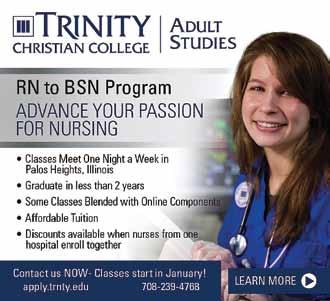


The Illinois Center for Nursing’s (ICN) central challenge: to optimize ICN’s influence as the leader for nursing workforce development that impacts quality healthcare policy, practice and education in an era of change. The ICN Board prioritized work in three areas:
• Foster key strategic partnerships to facilitate the work of the ICN
• Increase visibility and communicate the value of the ICN
• Collect, aggregate and analyze current and new data to better understand Illinois nursing workforce needs
Since the February 2014 strategic planning meeting, the two main priorities have been building strategic partnerships and data. The partnerships focus resulted in the September 29 event: Building the Healthcare Workforce for the Future (see separate article). This event was an opportunity for stakeholders to come together to discuss and share ideas for shaping the Illinois healthcare workforce of the future and to identify potential opportunities for collaboration.
The August 28, 2014 event (separate article) focused on Diversity: bridging the gap, and member-leaders of Illinois minority nurses associations attended and discussed the IOM Diversity vision, which was presented by Barbara Nichols, Center to Champion Nursing in America (CCNA) Diversity consultant. Other partnerships include the Illinois Healthcare Action Coalition, with co-chairs: IONL and ANA-IL
The second priority is Data collection and analysis. The ICN completed a preliminary review of the 2014 Illinois RN workforce survey. ICN has engaged a data manager; the first evaluation of the data is to be completed by early 2015. A deeper dive into the data is anticipated after this first review is completed, this will also allow for structuring of the reports based on the target audience.
The LPN nursing workforce survey, which is similar to the RN workforce survey was created, vetted and will be an offered for voluntary completion at the end of the individual LPN on-line licensure renewal process. IL LPN licensure renewal ends on January 31, 2015.
For the first time, data is being collected on Illinois LPNs, RNs and APNs in one year; APN data is being collected through the Illinois Healthcare Action Coalition (IHAC) Robert Wood Johnson Foundation grant. The RN and LPN nursing workforce surveys are offered upon completion of the individual on-line licensure renewal.
The ICN is working with industry professionals and educational institutions to ensure that Illinois has a nursing workforce necessary to meet the demands of a growing and aging population. Visit the ICN website, http://nursing. illinois.gov

LPN or RN positions available!!!
• 2nd shift (2-10pm) for LPN or RN (New Grads Welcome!)
• 1st shift for RN with two years’ experience (Rule 116)
• Serving children and adults with developmental disabilities.
• Upbeat, team-friendly work environment.
• Insurance Benefits, 3wks paid vacation, personal days, 401(k) plan
• Sign-on Bonus
• Duties include med pass, assessments, working w/ consultants and physicians
Apply to: Milestone, Inc. 4060 McFarland Rd. Rockford, IL 61111 OR Apply online at Monster.com OR Download an application at www.milestone-inc-il.org



The Affordable Care Act (ACA) has put in place comprehensive reforms that have improved access to affordable health coverage. For the uninsured, new pathways to coverage have made it easier to get and stay covered. We will continue to need more nurses, particularly in outpatient settings to care for the newly insured and the increasing number of baby-boomers who continue to retire.
The Illinois Healthcare Action Coalition (IHAC) Education Workgroup is working to create a system that allows nursing students to progress from an associate degree program to an advanced degree program utilizing one admission process and standardized or universal curriculum. This proposed new system would allow students to move through the higher education system without loss of coursework credits and time. This seamless progression model will allow for schools to graduate more RNs in order to meet the healthcare needs of the state. New and innovative strategies must be developed to facilitate a seamless progression throughout all levels of nursing education.
The IDFPR/Illinois Center for Nursing worked with the IHAC Education Workgroup to both develop and distribute a survey to assess support for a proposed standardized RN nursing education curriculum. The on-line survey was distributed to all Illinois nursing pre-licensure RN associate, hospital, baccalaureate and post-licensure baccalaureate completion programs between March and May 2014. With an 80% response rate, there was support for a standardized curriculum as described in the survey, promoting seamless RN education transition.
The subject of seamless RN education transition has also been on the agenda of Illinois nursing education organizations. These state nursing education organizations, Illinois Association of Colleges of Nursing (IACN), Illinois Community College Board (ICCB) Deans and Directors and Illinois Organization of Associate Degree Nursing programs (IOADN) meet quarterly. At least twice a year, a portion of each meeting is held jointly, discussing topics of mutual interest. The priority topic for this group during these meetings has also been the standardization of Illinois RN nursing curriculum.
The IHAC Education Workgroup has developed a position statement on seamless academic progression for nurses, which is available on the IHAC website: http:// www.illinoishac.com/workgroups/education/educationprojectscollaborations/
The IHAC Education Workgroup continues to meet to determine involvement of regulatory agencies to work with the standardization of RN nursing education curriculum, to eliminate competition among programs, to work towards a comprehensive database for all programs and requirements.
The Illinois Center for Nursing (ICN) website http://nursing. illinois.gov/education.asp has a list of all RN baccalaureatecompletion nursing education programs.

Four Saint Xavier University (SXU) students from the School of Nursing have been awarded scholarships of $2,500 each from the Blue Island Community Healthcare Foundation. The recipients are Bridget Allen of Blue Island, Jennifer Hodorowicz from Palos Heights, Christie Lewis from Hometown, and Kaylin Schrader of Oak Lawn.

Bridget Allen, a Marist High School graduate, plans to go into critical care nursing, preferably in an emergency room. She chose to pursue nursing as a career after having minor surgery on her back. Allen says, “The nurses who took care of me pre and post op were really nice and caring and made me want others to feel like that too.”

patients as well as those who have suffered spinal cord injuries,” and, because the hospital is a Level 1 Trauma Center, people with gunshot wounds can also get help.
Lewis says, “All those hours spent in hospitals as a teen due to diabetes (she was diagnosed with Type I diabetes at age 15), visits with my mom, a breast cancer survivor for four years, and the many great nurses her family saw during those times as her collective inspiration to become a nurse.”
continues the legacy started by St. Francis Hospital, which operated as a nonprofit in Blue Island, IL for over a century. The organization now funds various charitable groups that serve the area in providing such services as health screenings, programs for disabled children and adults, assistance for those with mental illness and addiction, and nursing education.
All four recipients are grateful to Blue Island Community Healthcare Foundation for its generous gift.
Media Contact:
Karla Thomas, Executive Director of Media Relations O: (773) 298-3937 C: (773) 575-9477
kthomas@sxu.edu

Jen Hodorowicz, also a Marist graduate, works on the mental health floor at Mercy Hospital and is considering graduate school after completing her R.N., possibly to become a nurse anesthetist. She expects to float to other departments at Mercy, but she requested mental health first because “there are many social stigmas about the mentally ill that are unfounded; mental health patients are no different than any other patients at the hospital seeking help.”
Christie Lewis, a certified nursing assistant (CNA), works at Advocate Christ Medical Center on the adult rehab floor, along with fellow CNA, Kaylin Schrader. Both SXU students are graduates of Oak Lawn Community High School and appreciate the experience they’re getting at Christ, noting that the adult rehab floor is a great place to learn because it affords them the “chance to work with stroke and cardiac
Kaylin Schrader had planned to attend SXU for nursing since the age of 10. “My neighbor was studying nursing at SXU, and when I’d see her after class, she’d tell me how awesome it was,” she explains. “I still keep in touch with her—she actually works at Christ!” Even though her mind was made up at a young age, Schrader notes that the process hasn’t always been so simple: “As the first person in my family to go to college, figuring it all out has taken a lot of willpower.” Although she realizes it will be emotionally difficult, upon earning her R.N., Kaylin plans to work in pediatric oncology.
These experiences, along with a quality SXU education, are sure to make them all excellent nurses in the future.
Founded in the 1970s as a supporting organization for St. Francis Hospital, Blue Island Community Healthcare Foundation
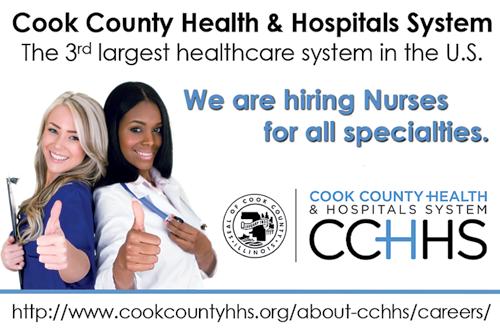

SXU Chicago Campus: 3700 W. 103rd Street, Chicago, Ill. 60655 – (773) 298-3000
SXU Orland Park Campus: 18230 Orland Parkway, Orland Park, Ill. 60467 – (708) 802-6200
Founded by the Sisters of Mercy in 1846, Saint Xavier University was the first Mercy college in the United States and is Chicago’s oldest Catholic university. Serving more than 4,300 students at its campuses in Chicago, Orland Park and its Loop location, the University offers: 43 undergraduate programs; 25 graduate program options in arts and sciences, business, education and nursing; and a variety of program options in continuing and professional studies. Recognizing Saint Xavier’s excellence in education, U.S. News and World Report has ranked SXU consistently among the Best Colleges in the Midwest.

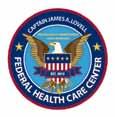









In September, The Illinois Nurses Foundation launched a fundraising online party with Origami Owl. Designer Kelli Lord graciously offered to donate 90% of her commission on any items purchased via the INF order site found at:
http://www.KelliLord.origamiowl.com/parties/INFINF457263
The event was scheduled to end on October 31st, but has been extended through December 15th. This will allow time to do holiday shopping while benefitting INF!
Please take a moment to access the web site and see the many items offered including customizable lanyard lockets, bracelets, earrings and necklaces. In addition, there is a beautiful line of holiday items to consider, but hurry as these items are very popular and have been known to sell out quickly.
Online orders will be shipped directly to your home or office. If you prefer not to order online, you may contact Kelli for assistance in ordering at 630.878.8470. Be sure to tell her you want your order to benefit INF!
A total of $8900 in scholarships were rewarded.
Jessica Bay - LOYOLA UNIVERSITY CHICAGO - MARCELLA NIEHOFF SCHOOL OF NURSING
Dr Wendy Burgess Memorial Scholarship
Emily Matthews - RESURRECTION UNIVERSITY
Dr Wendy Burgess Memorial Scholarship
Caryn Konopinski - OLIVET NAZARENE UNIVERSITY
Arthur L. Davis Scholarship
Brennett Williams – CHICAGO STATE UNIVERSITY
Centennial Scholarship
Jacqueline Garreau - LOYOLA UNIVERSITY CHICAGO - MARCELLA NIEHOFF SCHOOL OF NURSING
North Suburban Nursing Scholarship
Michelle Siears – UNIVERSITY OF ST FRANCIS District 2 Scholarship
Amy Bachman - RESURRECTION UNIVERSITY
Sonne Scholarship
Hannah Loek - RUSH UNIVERSITY Sonne Scholarship
Sikirat Ajoke Yusuf - RESURRECTION UNIVERSITY Sonne Scholarship
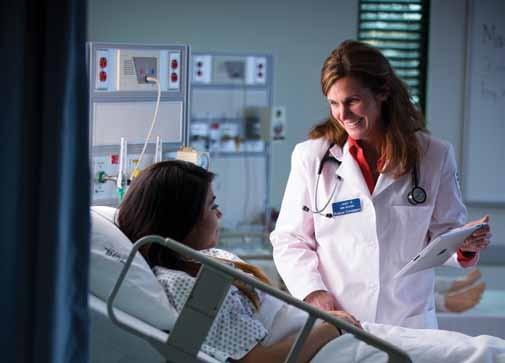


Nurses want to provide quality care for their patients.
The Nurses Political Action Committee (Nurses- PAC) makes sure Springfield gives them the resources to do that.
Help the Nurses-PaC, help YOU!
So. . . . . . . if you think nurses need more visibility if you think nurses united can speak more effectively in the political arena if you think involvement in the political process is every citizen’s responsibility.
Become a Nurses-PaC contributor tODaY!
❑ I wish to make my contribution via personal check (Make check payable to Nurses-PAC).
❑ I wish to make a monthly contribution to NursesPAC via my checking account. By signing this form, I authorize the charge of the specified amount payable to Nurses-PAC be withdrawn from my account on or after the 15th of each month. (PLEASE INCLUDE A VOIDED CHECK WITH FORM)
❑ I wish to make my monthly Nurses-PAC contribution via credit card. By signing this form, I authorize the charge of the specified contribution to Nurses-PAC on or after the 15th of each month.
❑ I wish to make my annual lump sum Nurses-PAC contribution via a credit or debit card. By signing this form, I authorize ANA-Illinois to charge the specified contribution to Nurses-PAC via a ONE TIME credit/debit card charge.
❑ Mastercard ❑ VISA
card number Expires CVV
Please mail completed form & check to: ANA-Illinois
Atten: Nurses-PAC PO Box 636 Manteno, Illinois 60950

Sharon Rangel MSN, MBA, RN IONL Executive Director
The Illinois Nursing Leader Fellows for 2014-2015 have been selected! The Illinois Nursing Leader Fellowship was created to implement the recommendations of the RWJF/ IOM report on the Future of Nursing. The fellowship is designed to bring together managers and new directors from diverse practice environments across the continuum to participate in interactive sessions to build leadership competencies and skills. Graduates of this program agree to serve as mentors to new participants of future programs. The fellowship consists of 1.5 consecutive conference days, four times per year. In a highly competitive process, the following nurses have been selected for the 2013 nursing leader fellowship program.
Kayla Banks Carle Foundation Hospital
Dinna Barker Freeport Health Network
Mary Cranston Illinois State University
Anne Curtiss Carle Foundation Hospital
Isabel Gonzalez Saints Mary & Elizabeth Hospital
Yvonne Kanyange-Nyenya Tenet Health Chicago
Susan Klug Memorial Medical Center
Ann Lough Rush University Med Center
Rose Mader Cadence Central DuPage Hospital
Salitha Marsh Cook County Hospital
Todd McCartney Advocate Bromenn
Cassie Mekeel Freeport Health Network
Blanca Miller Illinois State University
Pam Nikiel Saints Mary & Elizabeth Hospital
Ted Nofer Morris Hospital
Emily Oakes Memorial Medical Center
Timothy Rog Rush University Med Center
Joan Salomon-Sales Kindred Hospital
Sheryl Sons OSF- St Francis Hospital
Lisa Sullivan Cadence Central DuPage Hospital
Angela Turner Advocate Bromenn
Latisha Washington Swedish American Hospital
Robbin Weaver Cook County Hospital
Tina Wyatt Herrin Hospital
Jena Yerro-Molo Kindred Hospital
The program has outstanding faculty sharing their leadership knowledge. Faculty includes: Janet Krejci (lead), Melinda Noonan, Shelly Malin, and Cecilia Wendler. The next fellowship program will begin in November of 2015. Information and application forms will be shared prior.

Rincon Family Services awarded Susana Gonzalez, president of the Illinois Hispanic Nurses Association with the “Care Award.” The mission of Rincon Family Services is dedicated to rendering compassionate and effective programs that promote the quality of life by serving as a catalyst to advocate, educate and empower individuals and their families.

The Care Award is given in recognition to a lifetime of dedication to empowering and sustaining healthy women, families and communities.



Tucson, Arizona
Full-Time, 13-Week Traveler, Float Pool & Per Diem Opportunities
Northwest Medical Center is a community healthcare provider; a 300-bed facility with comprehensive inpatient and outpatient services including emergency care, heart and stroke care, weight-loss surgery and spine &


Mercy College of Health Sciences in Des Moines, Iowa is announcing a second cohort for the BSN program in January 2015. Students can make a smooth transition to Mercy College with their eligible liberal arts and science coursework. Visit us online or on campus to learn more.
Spring Semester Starts January 2015
• 3-year program of study (year round)
• Innovative concept-based approached to learning
• Local community-based optional experiences include understanding healthcare in homeless camps and with vulnerable populations
• Immersion trip options with Native Americans in South Dakota and Mayan and Latino populations in Yucatan, Mexico
• Clinical experiences at Mercy Medical Center – Des Moines and other leading healthcare providers in central Iowa
• Scholarships and other financial aid options available
• Graduates will be ready to assume roles
and community health
Choose from two
